The world’s 10 most astonishing abandoned towns
Forget ancient archaeological sites: these towns abandoned in the 20th century are far more photogenic and haunting.
Villa Epecuen, Argentina
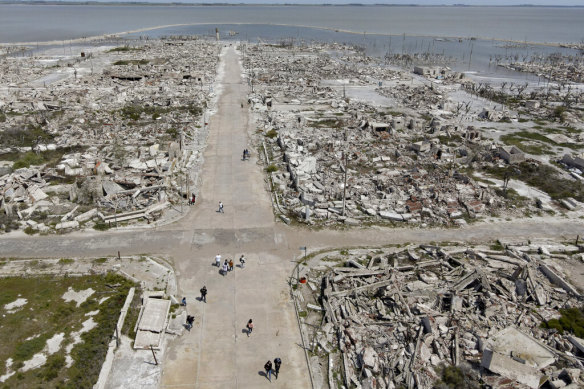
Tourists walk along the main street of the abandoned Villa Epecuen, Argentina.Credit: AP
This wellness resort by a saline lagoon near Buenos Aires was a popular weekend getaway until 1985, when a dam burst and swamped it for 25 years. When it finally drained, it left a gob smacking sight: an entire town – and petrified trees – encrusted in white and grey salt. You can still see hotel and restaurant signs, overturned cars and wellness baths, and it’s all eerily silent. See argentina.travel.
Belchite, Spain
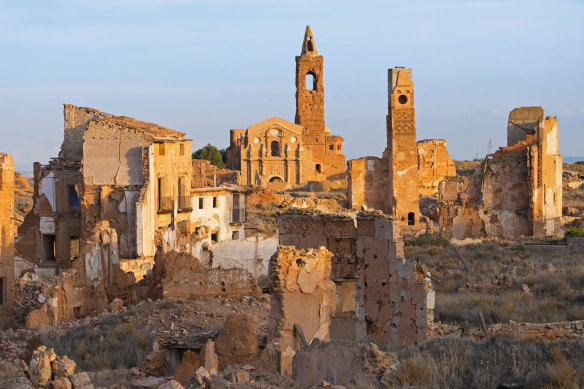
Belchite was on the front line during the 1930s Spanish Civil War. Credit: Alamy
The shocking immediacy of what happens in war is displayed in this village near Zaragoza in Spain’s north-east, which was on the front line during the 1930s Spanish Civil War. Little has changed since. Pick your way through the rubble on a guided tour, and you can see a wonky clock tower, crumbling houses and a wonderfully ornate church full of gaping holes. See belchite.es.
Spinalonga, Greece
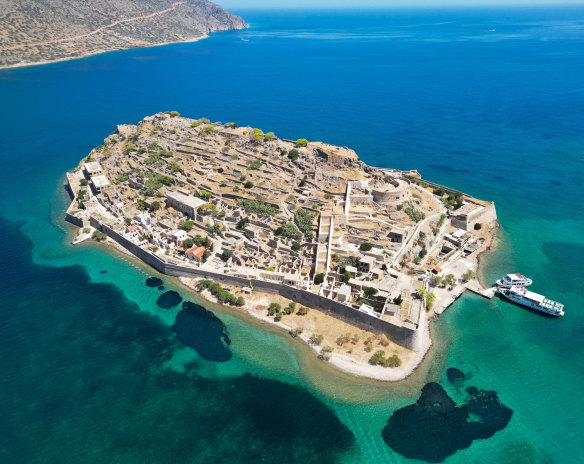
The remains of a Venetian fortress and Ottoman-era houses against a blue sea are bizarrely picturesque in Spinalonga.Credit: iStock
It’s not a nice idea to incarcerate leprosy patients on a rocky island off Crete, but that’s what happened to Greek lepers between 1904 and 1957. Today you can visit the roofless leper shop, school and café – plus the incinerator used to burn their clothes, and the cemetery where they’re buried. The remains of a Venetian fortress and Ottoman-era houses against a blue sea are bizarrely picturesque. See visitgreece.gr.
Plymouth, Montserrat
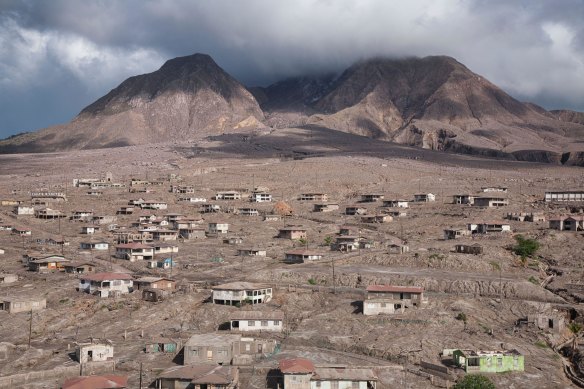
Plymouth resembles a modern-day Pompeii encrusted in lunar-like landscapes. Credit: Alamy
Although Plymouth remains the legal capital of this British Caribbean-island territory, it was abandoned in 1997 following volcanic eruptions that left it resembling a modern-day Pompeii encrusted in lunar-like landscapes. Visit with a guide, and you’ll see walls and church spires poking through the ash, and scatterings of books, toys and a typewriter left by panicked residents. Today tropical vegetation is encroaching on the town. See visitmontserrat.com.
Craco, Italy
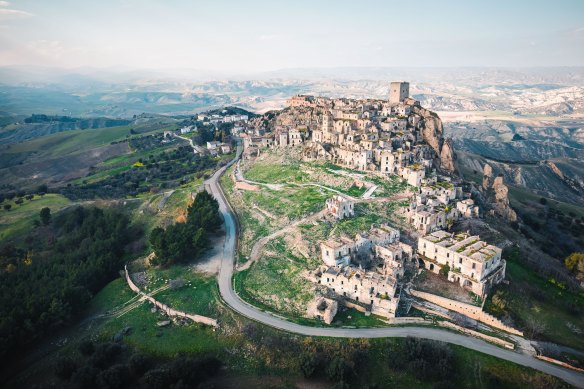
From a distance, Craco looks like a gigantic sandcastle.Credit: Alamy
Italy has abundant empty regional villages but this one in Basilicata in the far south is particularly atmospheric. From a distance, it looks like a gigantic sandcastle. Most inhabitants left in 1963 following a landslide, the last in 1980, and the town has crumbled ever since – visitors are advised to wear hard hats. You can wander through medieval piazzas, houses and churches in which weeds sprout. See italia.it.
Kolmanskop, Namibia
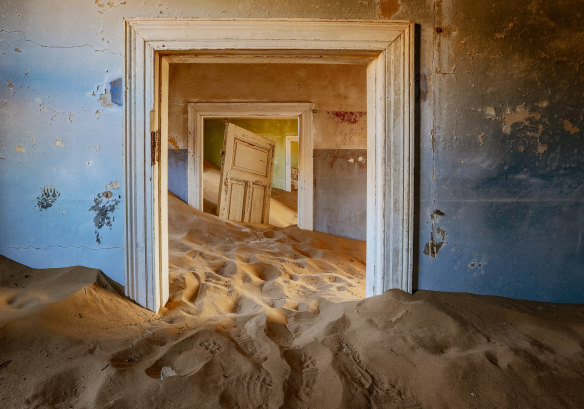
Sand has invaded and taken over these rooms in Kolmanskop, Namibia.Credit: iStock
Thanks to an early-20th-century diamond boom, Kolmanskop was a wealthy mining town with a casino, opera house and ice factory. By 1956 the last residents had given up and the Namib Desert took over. The sight of windblown sand piled in rooms, from which doors and baths poke out, is surreal. Kolmanskop is now a popular tourist destination, but one day will be engulfed. See visitnamibia.com.na.
Centralia, US
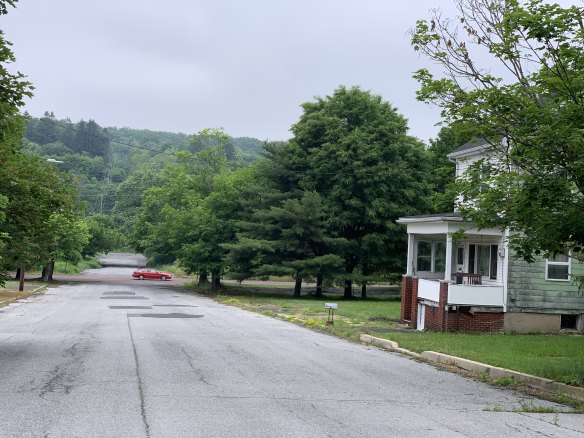
Centralia is like an apocalyptic film set.Credit: Getty
This Pennsylvania town was like any other until in 1962 the coal mine below it caught fire and, over the years, caused buildings to crack and sinkholes to appear. People started to leave, and now Centralia is like an apocalyptic film set: cracked and graffitied buildings, buckled roads, and occasional smoke rising from beneath the cemetery. The most striking building is the forlorn Ukrainian church. See centraliapa.org.
Oradour-sur-Glane, France
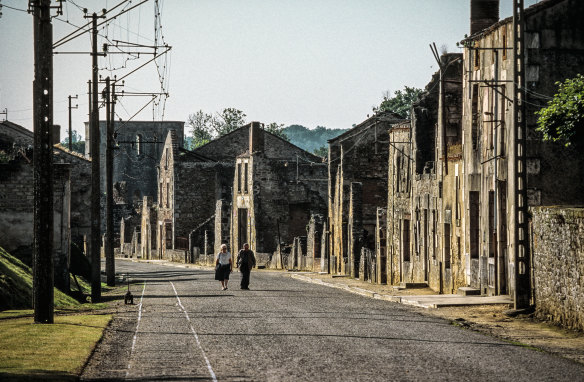
Oradour-sur-Glane’s main street with the tramway line. Credit: Getty
In 1944, the Nazi Waffen SS massacred 642 inhabitants in this village near Limoges, and its ruins remain as a powerful memorial to the victims. (A new village was built nearby.) This is a troubling visit rather than entertainment. You’ll be moved by the haunting emptiness of the roofless houses and café, rusting vehicles and gaping chimneys. The church altar is peppered with bullet holes. See destination-limoges.com.
Hashima Island, Japan
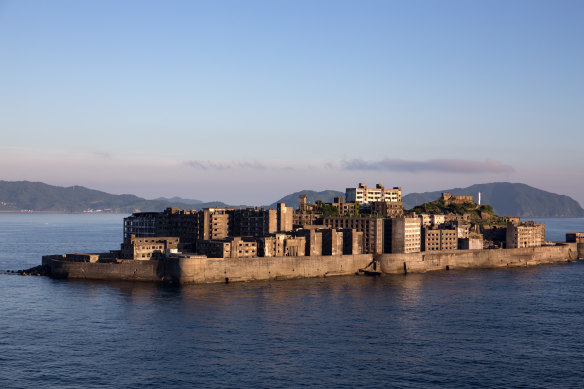
Hashima Island is a UNESCO World Heritage site.Credit: Getty
This former undersea-coal-mining and processing island with its jumble of industrial and residential buildings sits on an island off Nagasaki, and can be visited by ferry on a guided tour. Five thousand people once lived here; dilapidated apartment blocks look like battlements. Abandoned in 1974 and declared a World Heritage site in 2015, it’s most famous for its appearance in James Bond movie Skyfall. See discover-nagasaki.com.
Humberstone, Chile
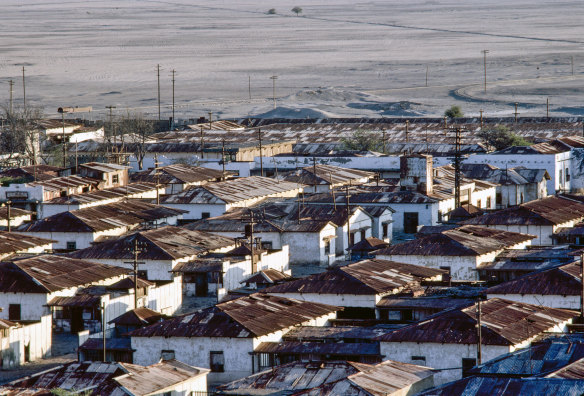
The mining town of Humberstone is remarkably well-preserved.Credit: Getty
This saltpetre mining town is one of a dozen left empty in the Atacama Desert since the mid-20th century. Thanks to the dry desert climate, much of it is marvellously preserved: shops, houses, cinema, a hotel and its empty swimming pool, factory buildings, an eerily quiet bandstand. Brown as the desert with rusting corrugated iron, Humberstone bakes in the heat and is strangely spooky. See chile.travel.
correction
An earlier version of this article said the Oradour-sur-Glane massacre occurred in 1942. It occurred in 1944.
Sign up for the Traveller Deals newsletter
Get exclusive travel deals delivered straight to your inbox. Sign up now.